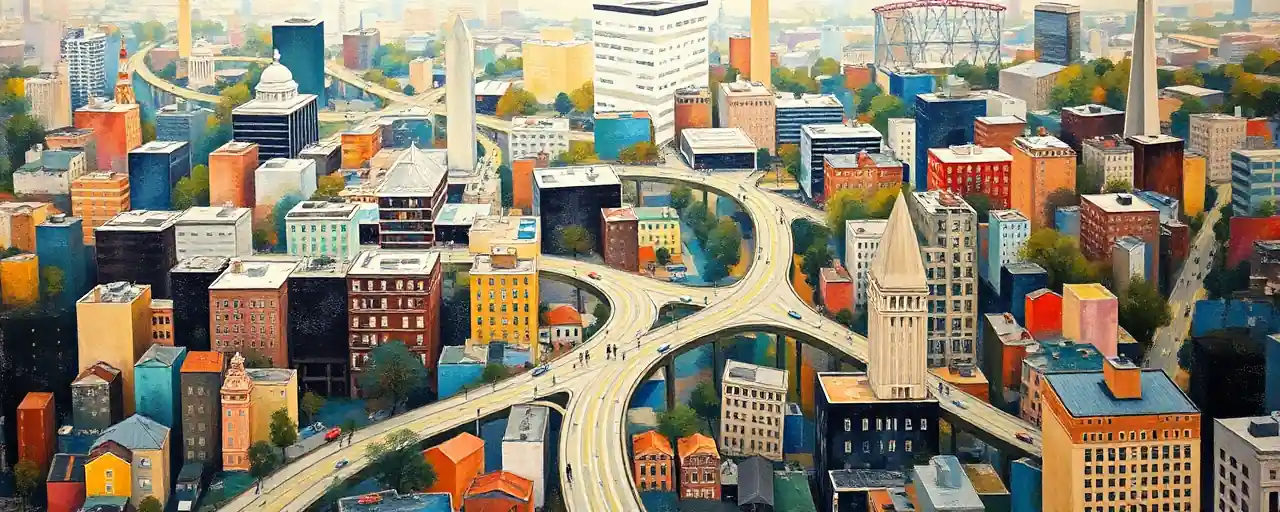A Bold Vision for Washington
Washington, D.C., the nation’s capital, often stands as a symbol of American identity, its monuments and parks drawing millions each year. Yet, beneath the grandeur, residents and visitors alike have long grappled with persistent challenges, from rising crime to neglected public spaces. On March 28, 2025, President Donald Trump signed an executive order aiming to transform the city, promising a safer, more beautiful D.C. through sweeping federal action.
The plan hinges on a dual focus: cracking down on crime and revitalizing the city’s appearance. Federal agencies, including the FBI and the Department of Homeland Security, are now tasked with bolstering local law enforcement efforts, while the National Park Service leads a charge to erase graffiti and restore landmarks. For a city where federal and local lines blur, this move signals a significant shift, sparking both hope and unease among those who call D.C. home.
Tackling Crime With Federal Muscle
At the heart of the initiative lies a push to curb crime, a concern that’s lingered in D.C. despite recent declines. Violent crime dropped 27% in early 2025 compared to the previous year, a trend partly credited to joint efforts between the Metropolitan Police Department (MPD) and federal partners. The executive order ramps up this collaboration, deploying more federal officers to hotspots like Union Station and the National Mall, while prioritizing immigration enforcement and pretrial detention for those deemed a public safety risk.
Data paints a complex picture. Homicides fell 17% nationwide in 2024, and D.C. has followed suit, yet residents still feel the sting of fare evasion on transit and vandalism in public spaces. The order also fast-tracks concealed carry licenses and targets the city’s sanctuary status, a move that’s reignited debates over local autonomy. Some hail the added resources as a lifeline for an overstretched MPD; others, including community advocates, warn that federal overreach could fray trust between police and the people they serve.
Restoring Beauty, One Park at a Time
Beyond safety, the administration aims to polish D.C.’s image. The “D.C. Safe and Beautiful Task Force” is rolling out a beautification plan, clearing homeless encampments, scrubbing graffiti, and sprucing up parks like Rock Creek and Anacostia. Since November 2024, crews have tackled over 1,600 graffiti incidents and hauled away 23 tons of dumped tires, signaling a tangible commitment to cleaner streets. Tourism, a $202 million boon from last year’s Cherry Blossom Festival alone, stands to gain from these efforts.
Yet, the push isn’t without friction. Local leaders argue they’ve been sidelined in decisions, while advocates for the homeless decry encampment removals, like the abrupt March 2025 clearance near the State Department with just a day’s notice. Beautification may lift spirits and property values, but critics question whether it masks deeper issues, like housing shortages, rather than solving them. The balance between aesthetics and equity remains a tightrope walk.
Voices on the Ground
For D.C.’s residents, the stakes feel personal. Business owners near the National Mall welcome the prospect of safer streets and tidier parks, hoping it draws more visitors to their doors. Meanwhile, immigrant communities brace for stricter enforcement, a nod to the city’s sanctuary policies now under federal scrutiny. Legal experts point to the Tenth Amendment, arguing that D.C.’s right to govern itself hangs in the balance, a tension rooted in its unique status as a federal district.
On pretrial detention, the numbers stir debate. A 7% uptick in detaining violent crime suspects, affecting about 174 people yearly, aims to keep dangerous individuals off the streets. Yet, with 92% of those released pretrial staying arrest-free, some question if the policy overreaches, especially as Black residents, who make up 87.8% of the incarcerated population, bear the brunt. It’s a gritty, human struggle, pitting safety against fairness in a city that’s never been simple to define.
Looking Back, Moving Forward
D.C.’s story has long been shaped by federal-local interplay. From Lady Bird Johnson’s 1960s beautification drives to the 1997 Revitalization Act shifting crime prosecution to federal hands, the capital has seen bold interventions before. Today’s efforts echo that history, blending enforcement with urban renewal. Crime strategies like Secure D.C. and past bail reforms show progress is possible, but the shadow of past oversteps lingers, fueling skepticism about top-down fixes.
The road ahead demands clarity. Early wins, like lower crime rates and cleaner parks, offer a glimpse of what’s possible. Still, the task force’s reports to the White House will need to weigh results against unintended costs, from strained community ties to displaced families. For a city that’s both a global stage and a local neighborhood, success hinges on listening as much as leading.
